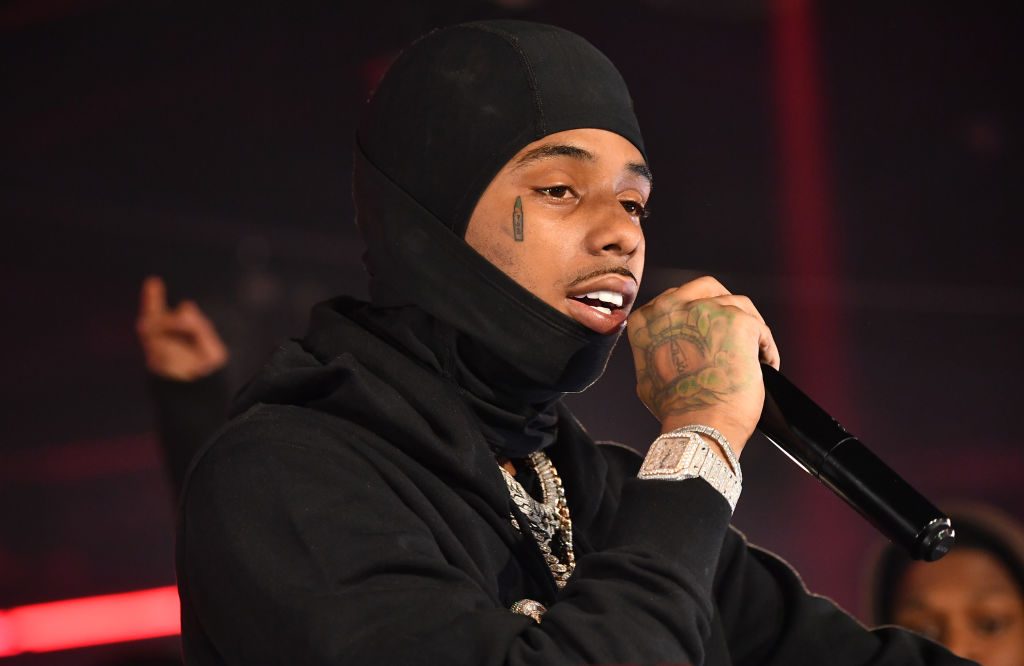How The Pooh Shiesty Mask Became A Cultural Phenomenon
A Fashion Statement: How The Pooh Shiesty Mask Became A Cultural Phenomenon

It seems like everyone is rocking the Pooh Shiesty mask nowadays, even ICE agents. But where does this phenomenon come from?
Pooh Shiesty was recently released from federal prison. His release marks the end of a turbulent four-year stretch that saw one of rap’s fastest rising stars sidelined during his prime.
His incarceration stemmed from a 2020 Miami-area shooting connected to a botched robbery, leading to federal firearm conspiracy charges. In April 2022, he pled guilty and was sentenced to 63 months (just over five years) in prison, with time served shortening his stay. His recent release has sent a wave of excitement through the hip-hop community, with many fans noting that his freedom could reignite a movement he helped spark before his incarceration.
Before his arrest, Pooh Shiesty had cemented himself as one of the hottest new artists in the game. Signing to Gucci Mane’s 1017 Records under Atlantic, his breakout came in early 2021 with Shiesty Season, a mixtape that delivered street anthems and certified hits like “Back in Blood” featuring Lil Durk and “SUVs (Black on Black)” with Jack Harlow. His gritty, melodic, and unapologetically raw sound embodied the new wave of Memphis rap. Pooh’s delivery, distinct Southern cadence, and charisma gave him the aura of a generational voice, leading to a meteoric rise. Even before he could fully establish his dominance, his style and persona had already begun leaving a cultural impression.
The Pooh Shiesty Mask
That footprint extended far beyond music. One of the most recognizable visuals tied to Pooh Shiesty was his signature look: a black ski mask or balaclava, worn tightly across his face with only his eyes visible – The Pooh Shiesty Mask. It became part of his mystique and street image, and soon after, people everywhere were copying it. As his fame grew, the accessory itself took on a name, the “Shiesty Mask.” Whether in music videos, on social media, or in everyday streetwear, fans and imitators alike began rocking them as a badge of coolness and anonymity. What started as part of Pooh’s image quickly evolved into a mainstream fashion trend.
The Pooh Shiesty mask phenomenon exploded nationwide. Retailers began referring to balaclavas as “Pooh Shiestys.” Stores across major cities, from Memphis to New York to San Francisco, began posting signs reading “No Shiesty Masks Allowed” or “Please Remove Your Shiestys” due to concerns about theft or safety. Still, that only underscored the mask’s cultural reach. It symbolized more than style as it became a reflection of modern urban identity, blurring lines between street fashion, protection, and rebellion. The mask tapped into something deeper: a generation using fashion as both expression and armor. While not everyone embraced the imagery, there’s no denying that Pooh Shiesty’s influence reshaped how people viewed a once simple piece of winter gear.
Now that Pooh Shiesty is free, his team has made it clear that he’s ready to refocus and rebuild. Sources close to the rapper claim that he plans to return to the studio immediately, with new music expected before the end of the year. Beyond the music, there’s buzz about him expanding into fashion, possibly capitalizing on the “Shiesty” brand that organically became a cultural phenomenon. Fans and peers alike are eager to see what trend he’ll set next because if history has shown anything, it’s that Pooh Shiesty doesn’t just follow the culture; he helps define it.
RELATED: Shiesty SZN: Pooh Shiesty Has Been Released From Prison







